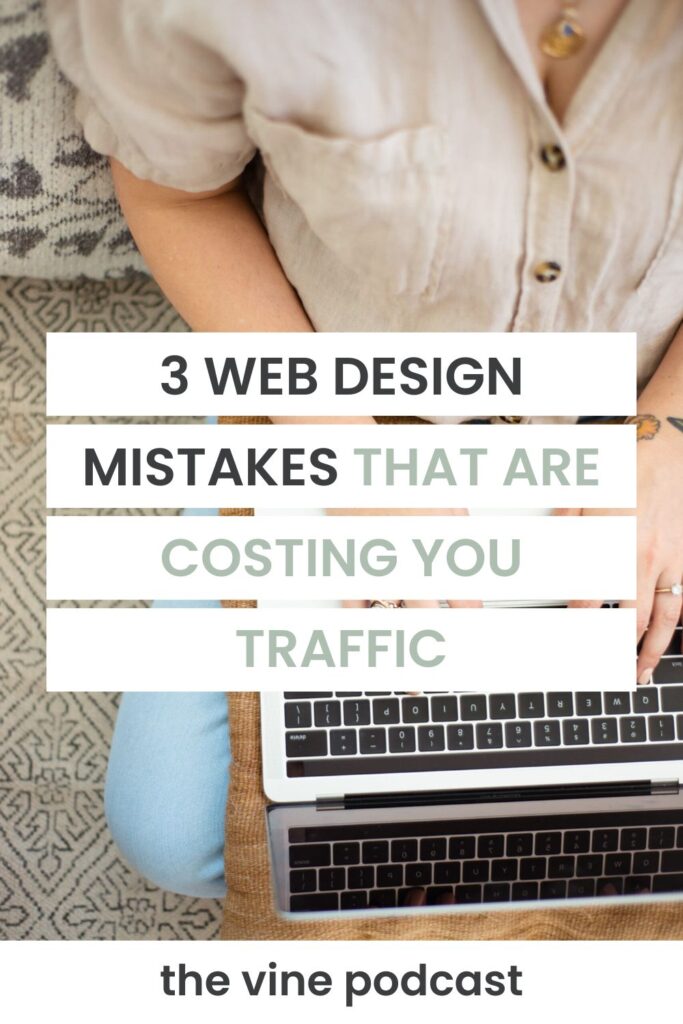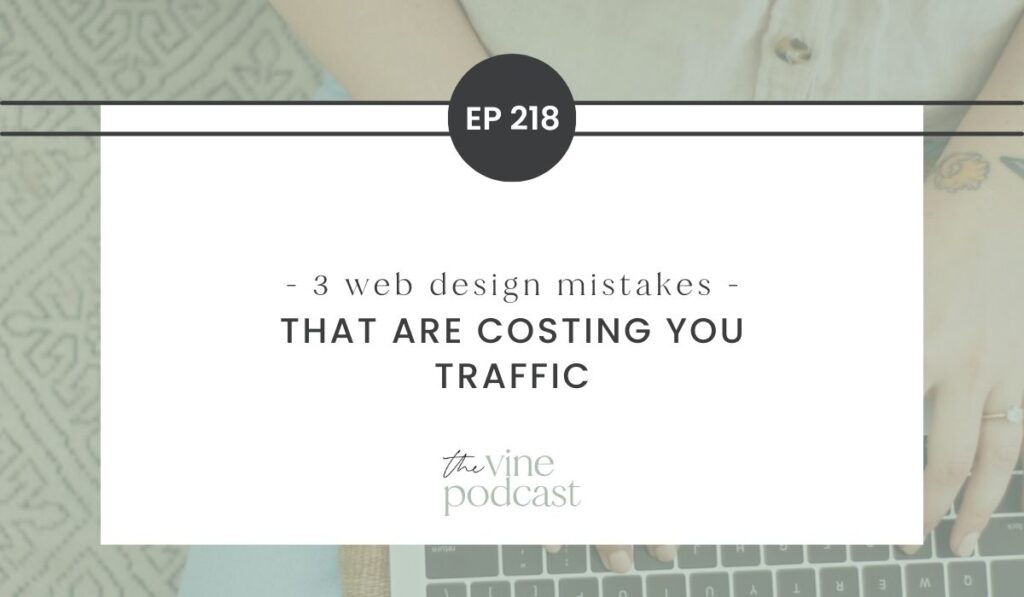Have you ever wondered why visitors seem to bounce off your website faster than a hot potato? Or why your carefully crafted content isn’t converting casual readers into loyal fans?
If you’re nodding along, you’re not alone. After years of designing websites for food bloggers, I’ve noticed the same three mistakes popping up again and again—and they’re quietly sabotaging your traffic growth.
The good news? These aren’t complicated technical issues that require a complete website overhaul. They’re strategic problems with surprisingly simple solutions that you can start implementing today.
Let’s dive into the three web design mistakes that might be costing you precious traffic, and more importantly, how to fix them.


Mistake #1: Your Homepage Fails the 3-Second Test
Picture this: A potential new reader discovers your blog through a Google search, clicks over to your homepage, and within three seconds… they’re gone. Back to the search results, never to return.
This scenario happens more often than you’d think, and it’s because your homepage isn’t clearly communicating what your blog is about or who it’s for.
Here’s the reality: In our fast-paced digital world, you have approximately 3-5 seconds (maybe 10 if you’re lucky) to make an impression on a first-time visitor. If they can’t immediately understand what your blog offers and whether it’s relevant to them, they’ll move on.
The deeper issue: Many food bloggers are afraid to niche down too specifically because they worry about alienating potential readers. But here’s what I’ve learned from working with multiple sourdough bloggers—even within the same niche, each blogger has a unique approach, audience, and perspective. The key is clearly defining what makes YOU different within your niche.
How to Fix It:
- Be brutally honest: Look at your homepage through a stranger’s eyes. Is it immediately obvious what your blog is about?
- Get specific: Instead of saying you share “healthy recipes,” explain your specific approach to healthy eating
- Define your unique angle: What makes your sourdough/healthy/weeknight dinner content different from everyone else’s?
- Use AI as a brainstorming tool: Try ChatGPT or Claude to help you articulate your unique positioning when you’re too close to see it clearly
Mistake #2: Your Categories Are Confusing Google (And Your Readers)
Categories might not be the sexiest part of website design, but they’re absolutely crucial for both user experience and SEO. Yet I see the same category mistakes over and over again.
The most common issue? Having too many thin categories—meaning you have tons of categories with only a handful of posts in each one.
Why this hurts your traffic:
From a user perspective, thin categories create a frustrating experience. Imagine clicking on a category expecting to find lots of great content, only to discover five random recipes that don’t really help you explore that topic thoroughly.
From an SEO perspective, you’re creating lots of weak pages for Google to crawl, which can dilute your site’s overall authority and confuse search engines about what you’re really an expert in.
The Category Rule of 12:
Don’t create a category unless you have at least 12 blog posts that fit within it. For larger blogs, this number should be even higher.
How to Fix It:
- Audit your current categories: Do you have more than 15 categories? It’s time to consolidate
- Apply the 12-post rule: Merge or delete categories that don’t meet this threshold
- Optimize your category pages: Add descriptions, feature top content, and create a great browsing experience
- Think in content silos: Each category should be robust enough that someone could “get lost” exploring all the content within it

Mistake #3: Your Homepage Is Just a Blog Feed
I’m continually surprised by how often I see this, especially since it’s been a known issue in the blogging world for years. Yet many food bloggers still have homepages that are simply a chronological list of their latest posts.
Why this doesn’t work: Your homepage visitors are often your most curious potential fans. They’re actively trying to understand what your site is about, who you are, and what’s in it for them. A chronological feed of random recent posts doesn’t help them on this journey.
Think about it from a reader’s perspective: If your last five recipes are a soup, a dessert, a breakfast, a snack, and a dinner—and they’re all from different dietary approaches—a new visitor can’t get a clear sense of what you’re actually about.
How to Fix It:
Feature your best content prominently: Showcase your most popular recipes and posts where new visitors can easily find them.
Highlight your strongest categories: Don’t just list all your categories—feature the ones that best represent what you’re known for.
Create clear pathways: Make it obvious how different types of visitors can find what they’re looking for, whether that’s quick weeknight dinners or elaborate weekend baking projects.
Add a “Start Here” section: This is especially powerful if you help people solve specific problems (like gluten-free living or sourdough baking), but even general food bloggers can create a helpful starting point for new readers.
Your Website Has More Power Than You Think
Here’s what I want you to remember: Your website is one of the few spaces online that you have complete control over. While algorithm changes can impact your social media reach and search rankings can fluctuate, your website is your digital home base.
These three mistakes might seem small, but they have a compounding effect on your traffic and reader loyalty. When you fix them, you’re not just improving individual pages—you’re creating a better overall experience that encourages people to explore more of your content, remember your brand, and come back for more.
The best part? None of these fixes require advanced technical skills or a complete website redesign. They’re strategic improvements that you can implement gradually, testing and refining as you go.

Ready to Transform Your Website?
Take a honest look at your current website and identify which of these three mistakes might be holding you back. Pick one to focus on this week—whether it’s clarifying your homepage messaging, auditing your categories, or featuring your best content more prominently.
Remember, small improvements can lead to significant results when it comes to keeping visitors engaged and converting them into loyal readers.
Call to Action
What’s your biggest website challenge right now? Have you noticed any of these issues on your own site? Drop a comment below and let’s discuss how you can start making these improvements today. And if you found this helpful, share it with a fellow blogger who might be struggling with the same issues!

ready to take your food blog to the next level?
We work with food bloggers looking to stand out of the crowd through custom brand and website design.




Leave a Comment